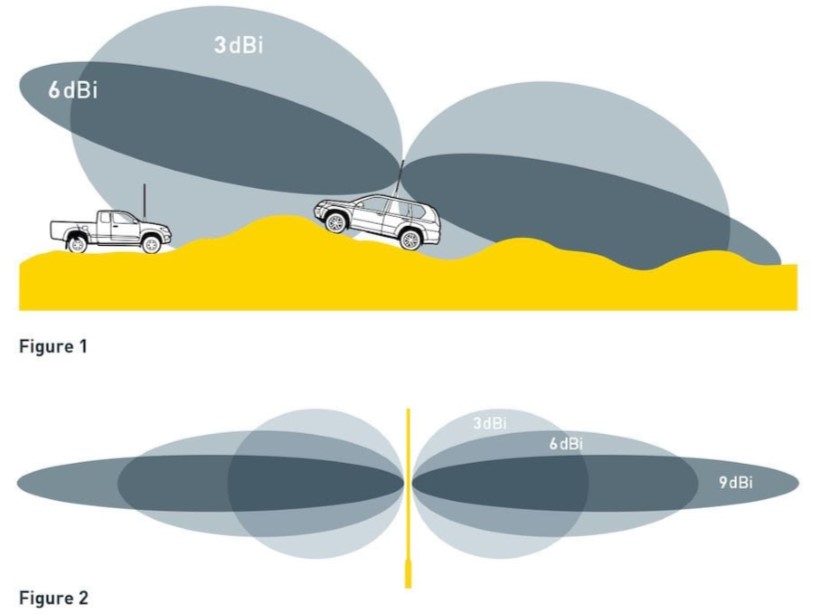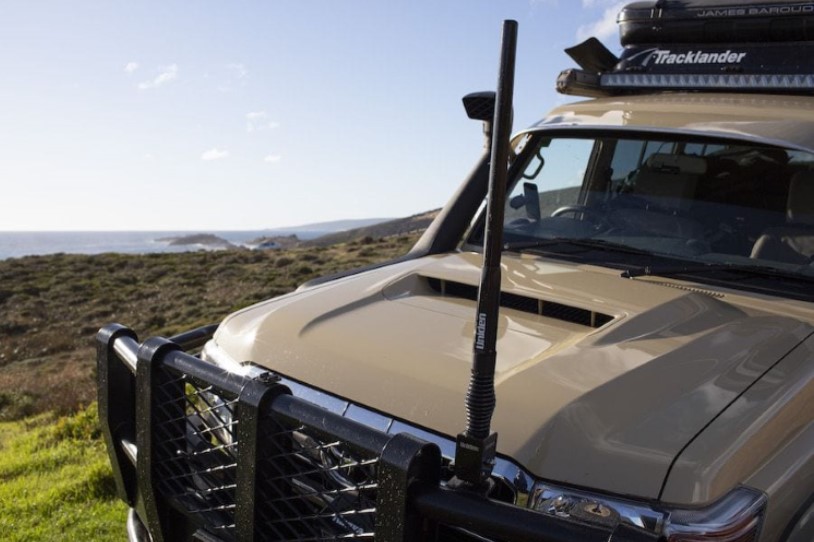Aerial size determines how your radio CB will perform
When it comes to choosing the right UHF CB aerial, size is important, but it’s probably not what you think. Taller, with higher ‘gain’ isn’t always better.
It’s a common misconception that a tall CB aerial gives the longest reception and transmission range in all situations. Certainly a tall aerial works better than a shorter one in open, flat country, but it’s not as effective as the shorter aerial in hilly or undulating terrain.
How can that be?
Aerials are defined by ‘gain’. Gain is an electromagnetic term that describes how well an antenna converts electrical power into radio waves in a specific direction when transmitting and the reverse function when receiving.
Gain is measured in ‘decibels’ (dB), which is somewhat confusing, because noise-level measuring and audio equipment also use decibels as a unit of measure, but dB is a general unit that can be applied to nearly any force with amplitude or power and isn’t reserved exclusively to describe the loudness of sound.
Gain, in the case of aerials, is measured in comparison with an isotropic aerial, which is a theoretical aerial, having the same intensity of radiation and reception in all directions. So, an antenna with 0dB would evenly transmit and receive radio waves to and from all directions, like a perfect sphere.
Such an aerial would have great coverage in all directions, but would not have much range. More gain than 0dB is desirable to increase range and that’s why CB aerials are described variously as having 3dBi, 6dBi or 9dBi gain. The ‘i’ in the description is the comparison with ‘isotropic’.

However, as usual, there’s a ‘catch’. To increase aerial range the incoming and outgoing radio waves become limited in focus. The more gain and, therefore, range; the smaller the area of coverage. The isotropic theoretical spherical coverage narrows to a gradually flattening torus (donut) shape, with the aerial at its centre.
On flat terrain, that donut radio-wave coverage isn’t a problem, because the focus often reaches as far as the horizon, but the accompanying diagram shows the real-world limitations of high-gain 6dBi and 9dBi aerials in dune country.
Some truckies fit two aerials to their vehicles, spaced as far apart as possible, to avoid interference, using a switch to change between aerials. Oricom has taken that a step further, with a twin-aerial-specific CB radio that automatically switches between aerials, without user intervention.
It’s clear that the narrower band produced by a high-gain aerial may pass over the top of another vehicle aerial, where a lower-gain aerial will contact it.
So, for optimum CB radio coverage in all conditions, you need a short aerial and a long one.
Some people fit two aerials to their vehicles, spaced as far apart as possible, to avoid interference, using a switch to change between aerials. Oricom has taken that a step further, with a twin-aerial-specific CB radio that automatically switches between aerials, without user intervention.
An alternative is to opt for a ‘twin’ kit, such as Uniden’s 2020-release ATX that comes with a single coil-spring mounting and two screw-on aerials; a 725mm one with 3dBi gain and the longer, 1200mm one with 6.6dBi gain.
It’s pretty easy to find a spot to stow the second aerial in most 4WDs and it’s easy to swap them when conditions dictate a change in gain.


Courtesy https://outbacktravelaustralia.com.au/4wd-mods-comms-nav/size-does-matter-choosing-the-correct-cb-aerial/ Sourced 1.12.20